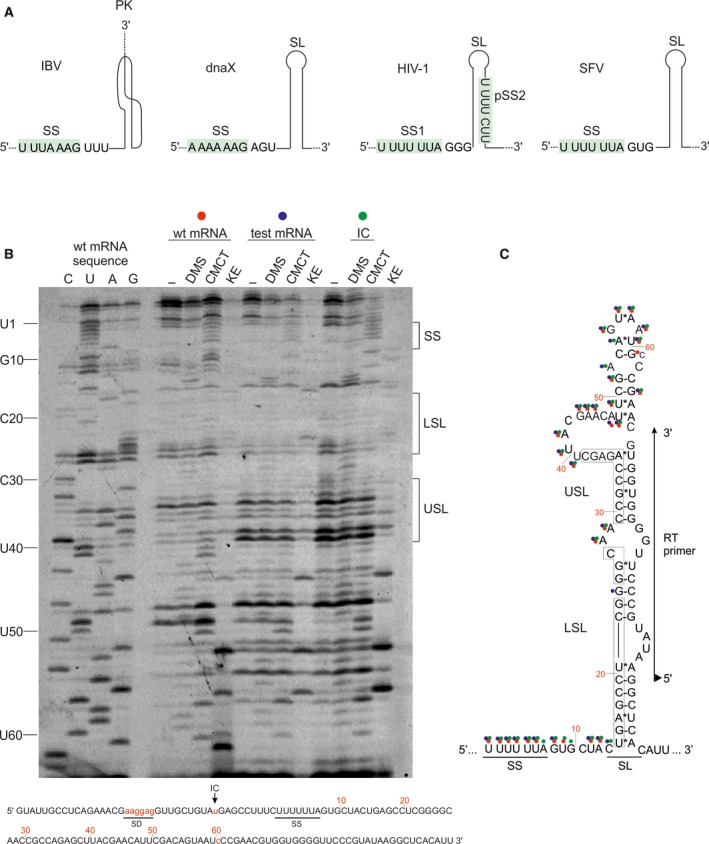Figure 1.

Sequence and structure of mRNA frameshifting motifs. (A) From left to right, schematics of frameshifting motifs of IBV 1a/1b, dnaX of E. coli, gag‐pol of HIV‐1, and 6K of SFV. Slippery sites (SS) are indicated and highlighted in green. The regulatory downstream mRNA element is a pseudoknot (PK) or a stem‐loop (SL), as indicated. pSS2 in HIV‐1 stands for the second putative SS. (B) Chemical probing of the mRNA secondary structure element in the SFV 6K mRNA. In vitro transcribed mRNA was treated with dimethyl sulfate (DMS; A‐ and C‐specific), 1‐cyclohexyl‐3‐(2‐morpholinoethyl) carbodiimide metho‐p‐toluenesulfonate (CMCT; U‐specific and low reactivity toward G) and β‐ethoxy‐α‐ketobutyraldehyde (kethoxal KE; G‐specific, and analyzed base modifications by primer extensions 109. (–) indicates untreated mRNA. Positions of reverse transcription (RT) stops due to modification were visualized on a sequencing gel using fluorescence primer complementary to positions 109–129 nucleotides of the mRNA (60–80 nucleotides downstream the SS). wt mRNA has the native sequence; test mRNA has been optimized for translation in E. coli (see lower panel; SD is Shine–Dalgarno sequence, AUG is the start codon, G61 is mutated to C to remove a potential initiation codon); IC is the initiation complex of test mRNA with 70S ribosomes. C, U, A, G are sequencing lanes. Numbered nucleotides to the left refer to the nucleotides in the SFV mRNA starting from the slippery site as indicated in c. LSL is lower stem‐loop, USL is upper stem‐loop. (C) Secondary structure of SFV 6K mRNA based on bioinformatics prediction 27 and probing results. Modified nucleotides are marked with circles: red for the wt mRNA, blue for the test mRNA and green for the test mRNA in the IC. Sequences in boxes indicate nucleotides forming lower (LSL) and upper (USL) stems. Primer‐binding site for RT is marked with an arrow; triangle on the 5′ of the primer indicates its fluorescence label Atto647N.
